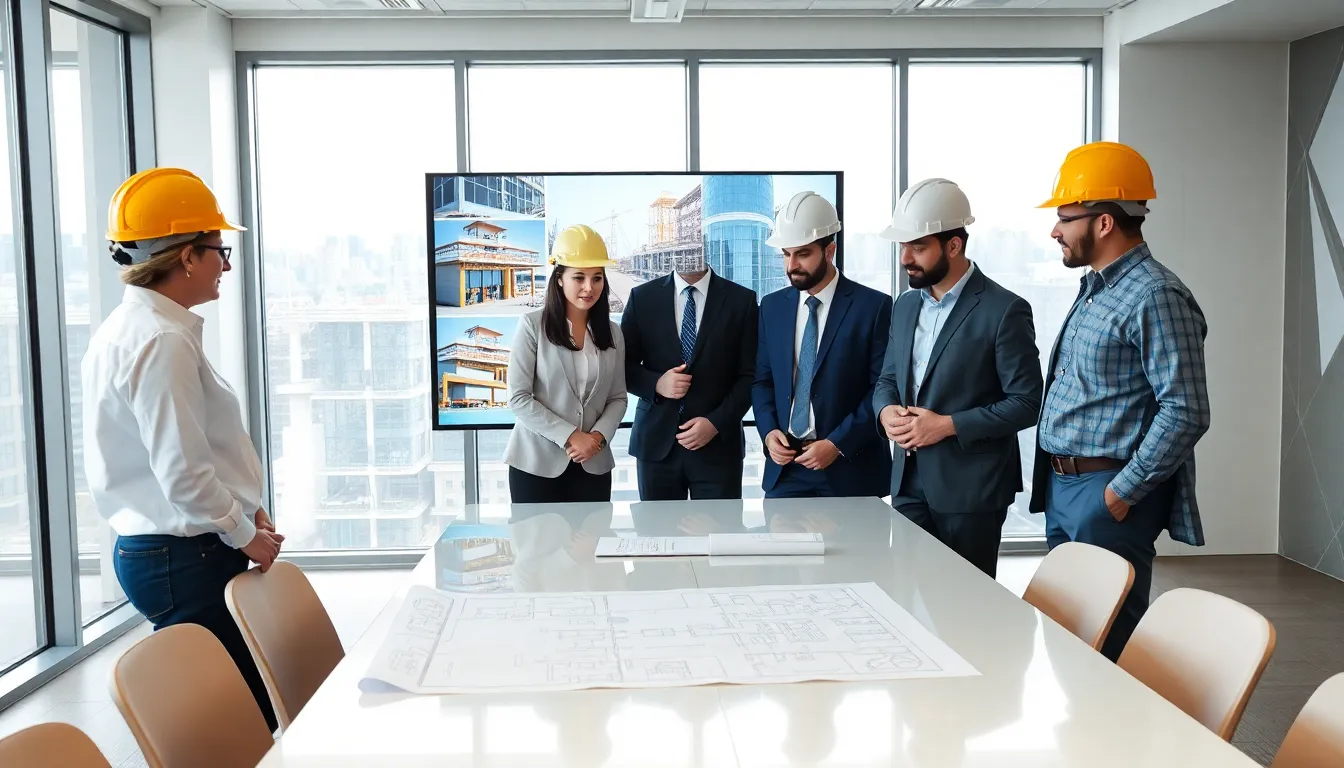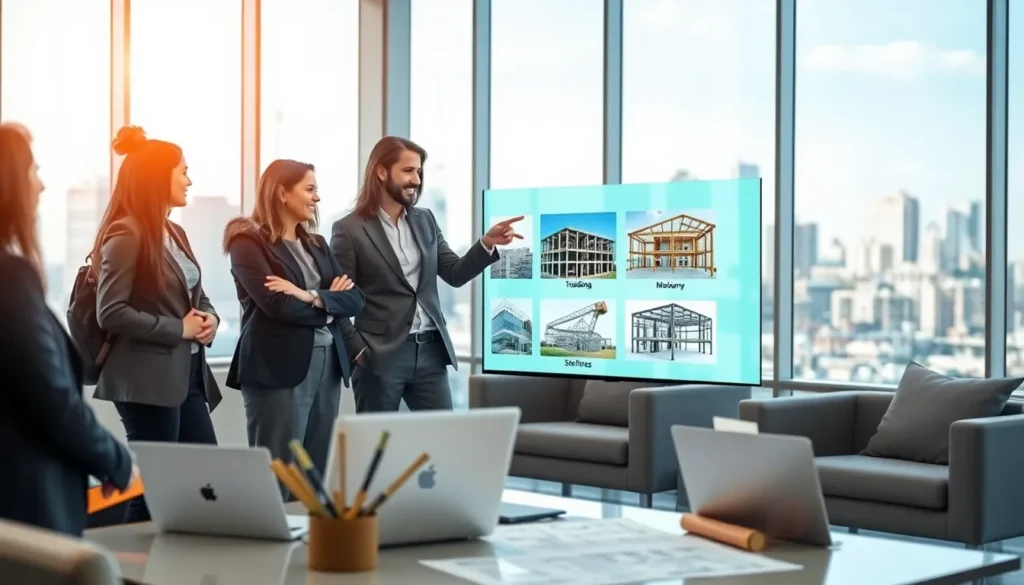When it comes to commercial building construction, the world is far from one-size-fits-all. Imagine trying to fit a square peg in a round hole, frustrating, right? Selecting the right type can feel just as complicated, and that’s why this guide is here to save the day. This article will unravel the mysteries behind commercial building construction types, from traditional to modern methods and sustainable practices. Buckle up, because you’re about to learn how different construction types can make or break your next big project.
Table of Contents
ToggleOverview of Commercial Building Construction

Commercial building construction serves various purposes, from retail spaces and offices to industrial facilities. With the increasing demand for functional and aesthetic buildings, understanding the types of commercial constructions becomes crucial. Each method has its unique set of advantages and disadvantages, influenced by factors like cost, time, and design preferences. Today’s commercial construction landscape is ever-evolving, offering a plethora of choices that cater to different needs and budgets.
Traditional Construction Methods
Traditionally, commercial buildings have been constructed using methods that have stood the test of time. Wood framing, masonry, and concrete are the cornerstones of these practices.
Wood Framing
Wood framing remains a popular choice, especially for smaller buildings. It’s cost-effective and provides excellent insulation. But, the risk of fire and pests can complicate its use in larger structures.
Masonry
Masonry construction, using brick or stone, offers durability that stands up to the elements. Its aesthetic appeal can add value to a property. While it’s strong, the thermal efficiency isn’t always as high, and construction times can be lengthy.
Concrete
Concrete, often used in floor slabs and walls, provides the backbone for many commercial buildings. It’s fire-resistant and offers exceptional load-bearing capabilities. But, don’t be fooled by its sturdiness. The environmental impact of concrete can’t be overlooked, and its finish might not appeal to everyone.
Modern Construction Techniques
In the quest for efficiency and innovation, modern construction techniques have emerged. These methods focus on speed, cost, and adaptability.
Modular Construction
Modular construction involves creating sections of a building off-site and then transporting them for assembly. This method drastically reduces construction time and minimizes waste. But, not all architects embrace modular designs for their limited flexibility.
Steel Frame Construction
Steel frame construction is a game-changer, especially for skyscrapers and large retail spaces. Its high strength-to-weight ratio allows for open spaces without the necessity for numerous support columns. But, steel can be costly and requires fireproofing.
Precast Concrete
Precast concrete components are manufactured in a controlled environment, leading to consistent quality. This method allows for accelerated construction times, but transportation logistics can sometimes present challenges.
Sustainable Construction Practices
As environmental consciousness grows, sustainable construction practices have gained traction. These methods aim to reduce waste, conserve energy, and improve the overall environmental impact.
Green Buildings
Green buildings use sustainable materials and energy-efficient systems. They may incorporate solar panels, rainwater harvesting, and energy-efficient HVAC systems. While the initial costs might be higher, operating savings and incentives make them a smart long-term investment.
LEED Certification
LEED (Leadership in Energy and Environmental Design) certification is becoming a gold standard in sustainable construction. Buildings meeting stringent energy and water efficiency standards can enhance their marketability. While certification can add upfront costs, the long-term benefits often outweigh them.
Comparing Commercial Building Types
With multiple construction types available, making comparisons can aid in decision-making.
| Type | Advantages | Disadvantages |
|---|---|---|
| Wood Framing | Cost-effective, good insulation | Fire risk, limited for large structures |
| Masonry | Durable, aesthetic appeal | Longer construction time |
| Concrete | Fire-resistant, strong | Environmental impact |
| Modular | Fast construction, waste reduction | Limited design flexibility |
| Steel Frame | Large open spaces, high strength | Higher costs, needs fireproofing |
| Green Buildings | Energy-efficient, environmentally friendly | Higher initial investment |
Knowing these differences can streamline the project selection process, allowing for more informed choices.
Factors Influencing Construction Type Selection
Numerous factors affect the choice of construction type for a commercial project.
Budget Constraints
Financial considerations are often paramount. The initial budget will heavily influence whether a project opts for cost-effective wood framing or diving into the more expensive steel construction.
Location
The geographical area can dictate specific material availability and labor costs. Urban settings may favor high-rise options, while rural areas might benefit from traditional methods.
Purpose of the Building
Different commercial uses can necessitate distinct construction types. For example, a retail space may prioritize aesthetics, while an industrial facility might require functional design over flashy elements.
The Future of Commercial Building Construction
What does the future hold for commercial building construction? Technology is undoubtedly leading the charge.
Advancements in Technology
From Building Information Modeling (BIM) to 3D printing, technology is revolutionizing how buildings are designed and constructed. These innovations not only improve efficiency but also decrease costs and enhance overall quality.
Smart Buildings
The rise of smart buildings is another trend worth noting. Incorporating sensors and data analytics, these structures can optimize energy use, enhance security, and improve user experiences. With the world becoming more connected, smart buildings will likely become the norm rather than an exception.



